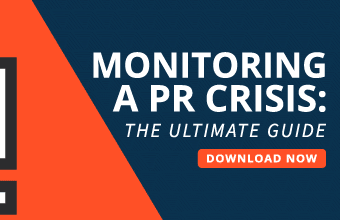Every company, regardless of its size, is at risk of a data breach. Statista reports that during Q1 2023, more than six million data records were globally exposed through cyber attacks. An IBM study offers further cause for concern, stating that the average cost of a data breach worldwide in 2023 is $4.45 million—a 15 percent increase over three years.
With the increased volume of data exchanged worldwide, it is wise to assume that data breaches will continue to increase in the coming years, making it vital for companies to be aware of it as much as possible.
What role does CSPM play in data breaches?
Cloud Security Posture Management, or CSPM, addresses one of the most common causes of data breaches—misconfigurations in the cloud. With more and more companies moving their operations online, configuration errors tend to creep in, leaving storage buckets and databases exposed.
With the help of a CSPM tool, you can scan and monitor your cloud infrastructure for such security lapses and install patches wherever needed, thus, protecting your business operations and securing your cloud storage.
However, while CSPM has a critical role in responding to data breaches, you can also take other steps. This article discusses the steps you must take if your company has been the victim of a data breach:
Tips to maximize damage control during a data breach
It is up to you to control the situation and protect your company after a data breach. The following six steps will help you promptly mitigate further damage, stop additional sensitive information from being stolen, and restore your operations:
1. Identify the source and extent of the breach
Ideally, it would be best to have advanced monitoring tools like intrusion detection systems (IDS) and intrusion prevention systems (IPS) to log anomalies in your cloud environment automatically. Along with that you should also regularly check the performance of your website by using website monitoring tools to avoid any negative impact on your business.
When a breach happens, analyze the logs to check out which files were accessed and what actions the cyber attacker took. Having such information about the event will help you put disaster recovery and incident response plans into immediate effect to protect critical business and customer data and limit the scope of the breach.
For instance, given the interconnected nature of micro-fulfillment centers, a breach may manifest an unusual digital activity that hampers order information systems, payment processing, and inventory management.
When you discover the breach, use IDS and network traffic analyzers and conduct a thorough system audit, like a penetration test, to trace vulnerabilities and irregularities. The longer the breach goes unchecked, the greater the potential for harm.
2. Contain the data breach
If a device shows signs of technical issues, do not rush to consider it compromised, but take the necessary precautions. Once you have located the problem, isolate the affected systems and devices and disconnect them from the access point of the malware. Shut them down, if necessary, so hackers cannot latch onto them to expand their attack. This gives you time to boost your cloud security by updating firewalls, anti-malware software, and antivirus.
For example, if an employee’s login details were used in a phishing scam, revoke their privileges immediately and have other employees change their passwords. Multi-Factor Authentication (MFA) should also be deployed to enhance password security.
In addition, make it a practice for your employees to reset passwords every six months to prevent such breaches. As your company goes through the data breach response process, the IT team must gather information about the data breach.
That is why it is wise to save a disk image or copy of the affected servers at the time of the breach. This ensures the digital evidence remains uncontaminated and helps implement a transparent chain of custody essential for potential legal proceedings.
3. Test your security fix
Now that you have taken the first few steps to contain the breach and prevent further access to your data, test your cloud infrastructure as comprehensively as possible so that the same breach technique is not applied to harm your company again.
Therefore, monitor your entire attack surface, including the environments of third-party service providers and vendors. Again, perform pentesting on all your servers and virtual machines to ensure that vulnerabilities do not exist elsewhere.
Real-time threat detection and response make remediating risks easy. But do so, utilize Attack Surface Management (ASM) tools to identify where the most critical risks are quickly.
Some ASM tools could also provide instant security scoring and continuous monitoring support to add to your company’s cloud security program. This allows you to have a real-time view of your security posture and prioritize threats that must be addressed during a breach.
4. Inform the relevant compliance authorities
As a business owner, you are responsible for sharing that your company data has been breached and must do it promptly. For example, if you operate in the European Union (EU), you must comply with General Data Protection Regulation (GDPR).
Now, GDPR mandates you to notify your supervisory authority within 72 hours of becoming aware of the breach. If you are unable to do so, you could be fined €20 million (about $22 million) or 4 percent of your company’s annual global turnover, whichever is greater.
Therefore, reach out to the concerned authorities depending on where you are based. They may even provide you with essential instructions to comply with post-breach regulatory standards for your industry.
5. Give all affected customers a heads up
In your communication with customers, be open about the breach. Explain that they may need to take specific measures to protect their identities, such as canceling credit cards.
This may pose an inconvenience to them, but it is better than getting blindsided by identity theft. Plus, there is a higher chance they will appreciate your honesty about the breach. There are three things you must take care of when notifying customers:
- Alert them as soon as possible: That way, they will have more time to protect themselves from fraud.
- Be clear about the nature and extent of the breach: Inform them of the type of information that was stolen and what steps they need to take, if any.
- Use one communication channel to contact the affected customers: In most scenarios, email is the most reliable of them all.
6. Deploy new data security policies and do post-breach cleanup
Whether the data breach was small or massive, the road to recovery can be long. In addition, regardless of how fast you inform your customers and how well they respond, you cannot assume no public confidence is lost in your company, so you must be prepared to take necessary steps to restore your company’s reputation.
Therefore, following such an event, you must review your internal policies and revise the security measures to keep similar incidents at bay. With the cybersecurity landscape continuously evolving, periodic reviews ensure your company is aware of the new threats and adapt its defenses accordingly.
So if you think your incident response plan does not clearly state the exact response procedures following a breach, it may be time to rewrite them.
Companies that are prepared to tackle a data breach have $2.66 million less in costs compared to breaches at organizations with no response plan.
Over to you
As a business owner, the thought of a data breach can be haunting. However, knowing what you are supposed to do IF it happens can help you better minimize the damage and protect your customers. The mantra is to stay calm and act quickly by following the steps, as mentioned above, and bring your business back in order. Good luck.








